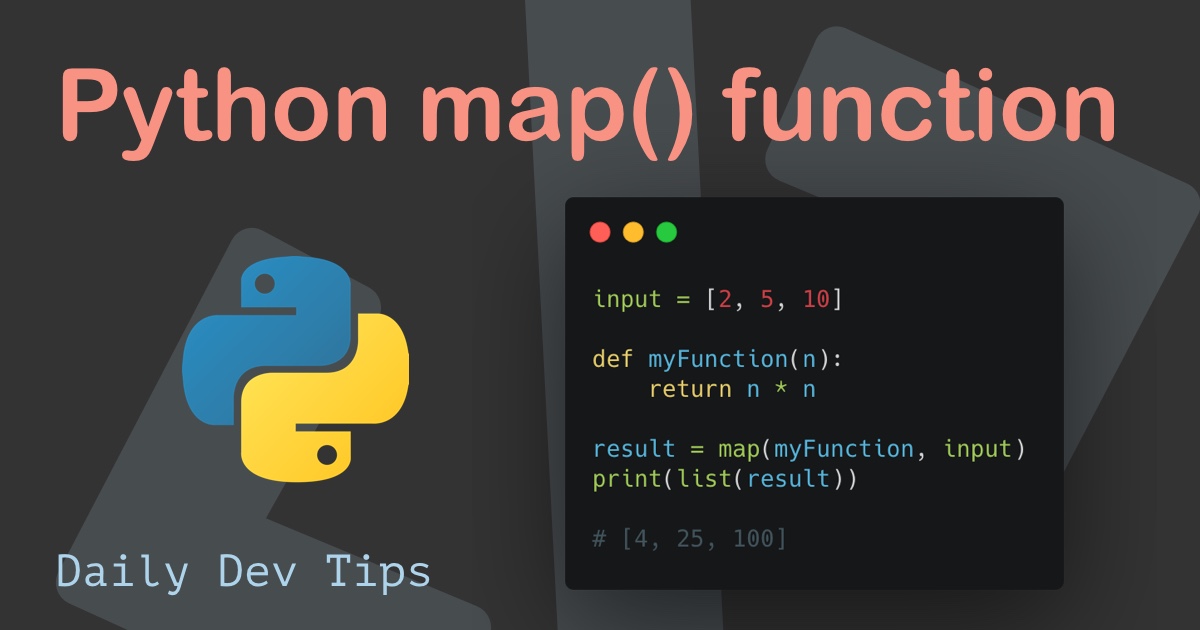

For example, see example below where we used lambda as the first argument in the python map() function to return cube values.

Lambda functions are handy when we need to pass an expression based function to map(). It is common to use lambda function with python map() function as the first argument. See one more example how we used python len() with map() function. There are many built-in functions in python which take an argument and return concrete value, we can use them with the python map() function. We can use any kind of Python callable with the python map() function, with the condition that it takes an argument and returns a concrete and useful value. Since map() returns an iterator (a map object), we need to call list() so that we can exhaust the iterator and turn it into a list object. Notice that we had successfully converted str to in using python map() function. Now, let us take one more example to see how we can use the python map() function to convert string numbers to an integer. But with map(), we get items on demand, and only one item is in your system’s memory at a given time. You can see that, with a for loop, we need to store the whole list in our system’s memory. Then we call list() on map() to create a list object containing the square values. The call to map() applies cube() to all of the values in numbers and returns an iterator that yields cube values. # created function to calculate cube of numberĬube() is a transformation function that maps a number to its cube value. Now, let us implement the same login in the python map() function. You can see that we used a for loop to iterate in the above example. Let us first find cube values using python for loop. See the example below which demonstrates the working of python map() function, where we take a list of numeric values and transform it into a list containing the cube value of every number in the original list. map(func, itera[, itera1, itera2., iteraN) To do that, python map() function applies a transformation function to all the items in the input iterable. The operation that map() performs is commonly known as a mapping because it maps every item in an input iterable to a new item in a resulting iterable. We can pass more than one iterable to the python map() function.


Second argument is iterable which is to be mapped. Map() passes each item of the iterable to the first argument ( function ). We will also cover how we can transform, combine and replace python map() function. In this tutorial we will learn about the python map function, and how it works. This function is useful when we need to apply a transformation function to each item in an iterable and transform them into a new interable one. This technique of loop without using explicit loop is called mapping in python. The python map() function is a built-in function that allows us to process and transform the items in an iterable without using an explicitly for loop.
PYTHON MAP GENERATOR
Example-2: Generator expressions replacing Python map.Example-1: List comprehension replacing python map.Example-2: Converting to numeric values using python map.Example-1: Using math operators in python map.Transforming numeric iterables using python map().Example-2: Removing punctuation using python map.Transforming string iterables with python map.Processing multiple inputs with python map.


 0 kommentar(er)
0 kommentar(er)
